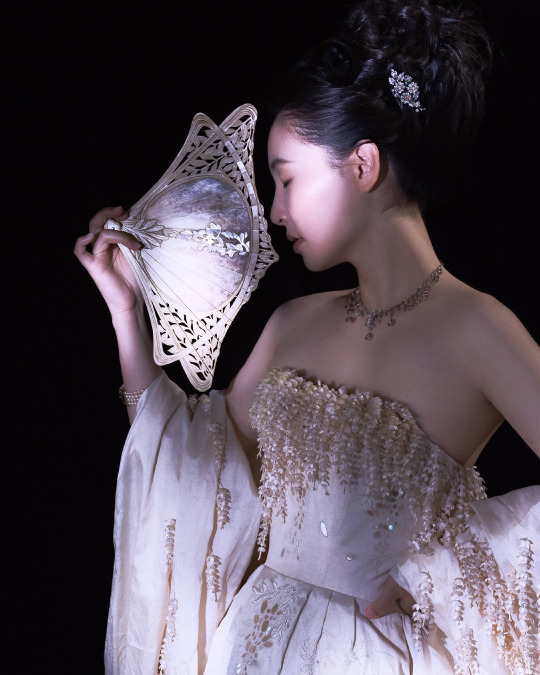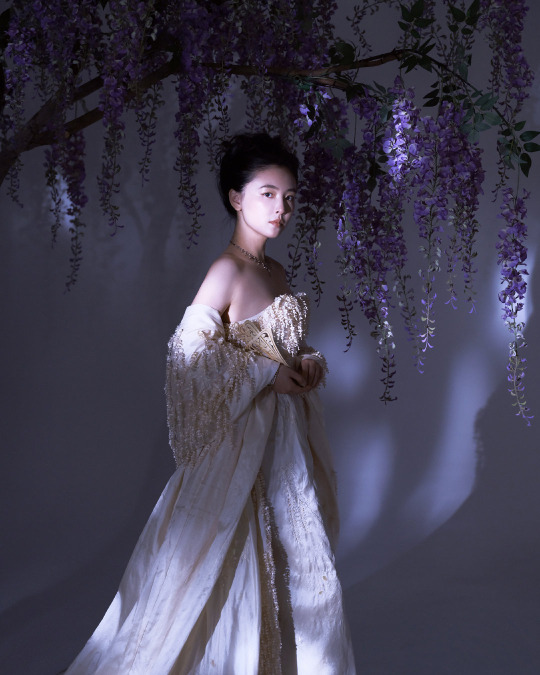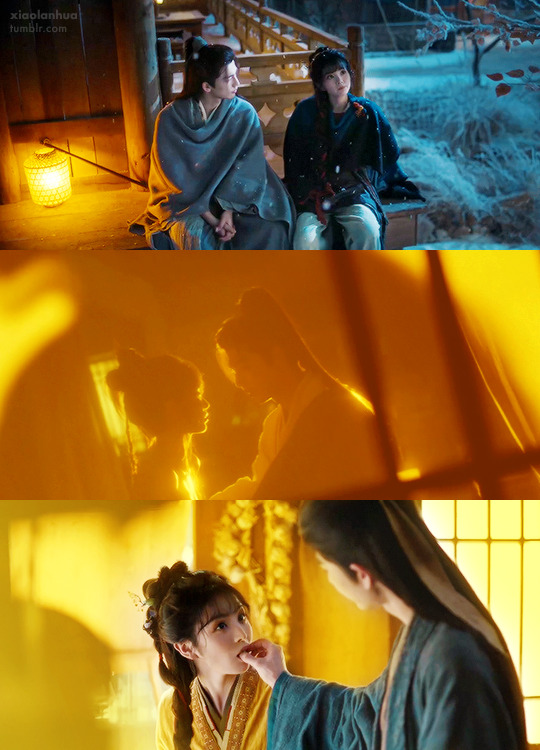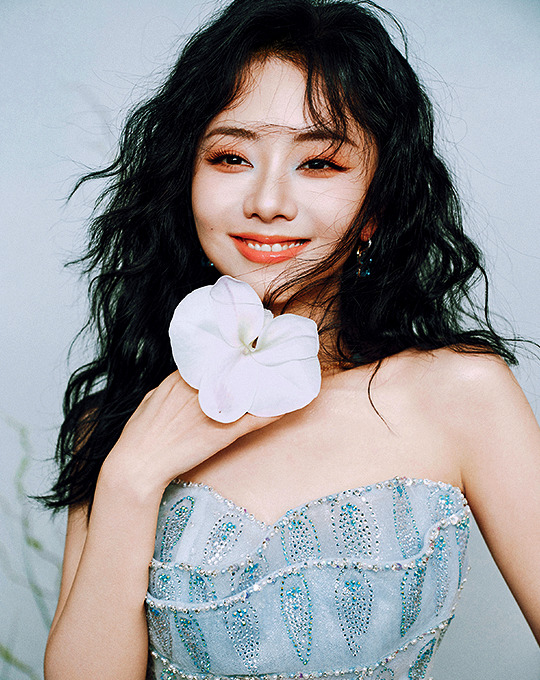Pictures of hanfu (han chinese clothing) I like. She/her. About Tags Replies Where to Buy Hanfu My Ko-fi
Last active 2 hours ago
Don't wanna be here? Send us removal request.
Photo
Chinese hanfu.





窄袖褙子:喷绘真丝双绉(单层) 吊带背心:真丝双绉(外层)、弹力丝绵雪纺(衬里) 六片裙:真丝双绉(外层)、真丝电力纺(内衬) 腰带:真丝双绉
双玉瓯
(via 【孤品样衣】数玉蜓·徵 【遇江南】 双玉瓯.女装 汉服 褙子套装-淘宝网)
31 notes
·
View notes
Text
[Hanfu · 漢服] China Five Dynasties And Ten Kingdoms Period--Min Kingdom (闽国) Traditional Clothing Hanfu Photoshoots









【Historical Artifacts Reference 】:
Based On Five Dynasties and Ten Kingdoms Period: Female Figures from the Tomb of the Empress of Min Kingdom (闽国)


🌸 Four-Butterfly Silver Hairpin (Buyao)

Unearthed from the Tomb of Lady Tang, Southern Tang, Five Dynasties Period
This exquisite silver hair ornament was excavated from the Tomb of Lady Tang located in Daxinggong, Nanjing, Jiangsu Province, dating back to the 10th century CE, during the Southern Tang regime of the Five Dynasties and Ten Kingdoms period.The butterfly ornaments are suspended by fine silver chains, swaying as the wearer walks—hence the name “buyao” (步摇, literally "step-shake")
🌸 Gold-Inlaid Jade Hairpin (Buyao)

Unearthed from the Tomb of Lady Tang, Southern Tang, Five Dynasties Period
This elegant gold-inlaid jade hair ornament was unearthed from the tomb of Lady Tang in Daxinggong, Nanjing, Jiangsu Province, dating to the Southern Tang state (10th century CE) during the Five Dynasties and Ten Kingdoms period.
Court Ladies Wearing Flowered Headdresses (《簪花仕女图》)
Although the Court Ladies Wearing Flowered Headdresses (《簪花仕女图》) is often mistakenly attributed to the Tang dynasty, art historical evidence indicates it was actually created during the late Tang to Five Dynasties and Ten Kingdoms period (9th–10th century CE).
The painting’s stylistic elements—such as the full-faced court ladies, elaborate hairstyles, floral hairpins (zanhua), and luxurious clothing—align closely with depictions of Southern aristocratic women in the Five Dynasties period, particularly those seen in Southern Tang tomb artifacts. These features reflect the refined elegance and cultural taste of that transitional era, rather than the earlier Tang high period.





🖼️Auction items suspected to be paintings from the Five Dynasties period


Although sometimes associated with Ming dynasty art, many Chinese scholars believe this painting better reflects the style of the Five Dynasties and Ten Kingdoms period. The figure’s proportions, attire, and Daoist elements resemble those seen in late Tang to Southern Tang artworks.
However, the painting’s exact date remains uncertain, and there is ongoing debate due to inconsistent seals and mixed stylistic features.
------------------
Photo :@大喵来了
Model:@是小芥末w
Stylist:@赵常月
Xiaohongshu app:https://www.xiaohongshu.com/discovery/item/6834368f00000000230013dc?
------------------
#hanfu#five dynasties and ten kingdoms#Min Kingdom#tang dynasty#recreation#buyao#hairpin#hair ornament#w#artifact#figure#art#簪花仕女图#history#reference#大喵来了#是小芥末w#赵常月#r
82 notes
·
View notes
Text









CHEN DULING 陈都灵 | Galenic Brand Event
Chen Duling: more photos here brand event: more photos here
25 notes
·
View notes
Text












BAO SHANGEN 包上恩 | 2025 Hunan TV and MGTV Industry Event
Bao Shangen: more photos here Hunan TV and MGTV Industry Event: more photos here
24 notes
·
View notes
Text



Bai Lu and Ao Ruipeng reunite for Moonlight Mystique promos
13 notes
·
View notes
Text








𝐖𝐔 𝐐𝐈𝐀𝐍 吴倩 — 𝐈𝐧 𝐋𝐖𝐄𝐍𝐗 𝐂𝐨𝐮𝐭𝐮𝐫𝐞
📍: Photoshoot | 🗓: 06-02-25
𝐌𝐎𝐑𝐄 𝐏𝐇𝐎𝐓𝐎𝐒 𝐇𝐄𝐑𝐄
29 notes
·
View notes
Text








Meng Ziyi for Youhug Global Content Showcase 2025
21 notes
·
View notes
Text




chinese hanfu in tang style by 青泠谷
572 notes
·
View notes
Text


Chasing Jade 逐玉 (TBA) Dir. Zeng Qing Jie
86 notes
·
View notes
Text


Shixiong, I'll be hopelessly in love with you.
光·渊 JUSTICE IN THE DARK · 2025
128 notes
·
View notes
Text




临江仙 | Lament of the River Immortal - Feud E27 ° Zeng Shunxi as Bai Jiusi
40 notes
·
View notes
Text















Chasing Jade (Second Trailer)
212 notes
·
View notes
Text










Tan Songyun 谭松韵 x Tencent Video 2025 Preview Party ⠀⠀
14 notes
·
View notes
Text

















Yu Shi for Harper's Bazaar China - January 2025
14 notes
·
View notes
















